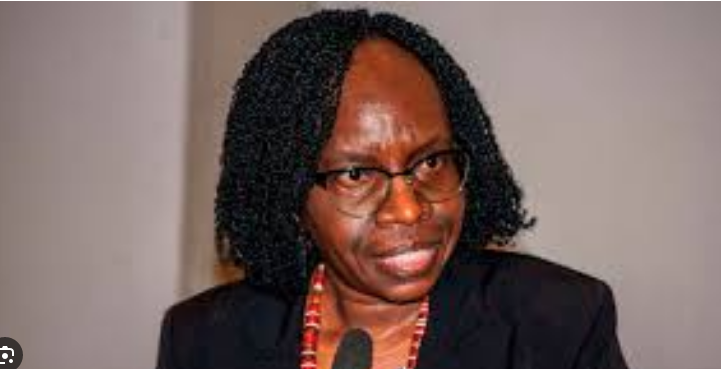
Who is Auditor General Nancy Gathungu
Currently in the public eye over damning reports by her office
The report points to possible inflation of premiums, non-existent beneficiaries, and systemic failures.
In Summary

Audio By Vocalize

The state-sponsored students’ health insurance scheme, EduAfya, has come under intense scrutiny after Auditor General Nancy Gathungu flagged overpayments of Sh2.2 billion.
In a special report tabled in Parliament on Tuesday, Gathungu discovered colossal overpayments made to the defunct National Health Insurance Fund, not supported by the number of students accessing the services.
The report points to possible inflation of premiums, non-existent beneficiaries and systemic failures in oversight by the ministries of Education and Health.
In some instances, some students from non-existent schools were recorded as having been served.
“The premiums payable during the period under review amounted to Sh14,175,000,000, which differed with the actual remittance of Sh16,468,040,851, resulting in an excess remittance of Sh2,293,040,851,” the report says.
“The excess remittance between the premium payable and remittance for the period under review was not reconciled or explained.”
Gathungu was auditing the government’s capitation and infrastructure grants in schools across the country.
It was conducted over a four-year
period running from 2020-21, 2021-22, 2022-23 and 2023-24.
In a revelation that raises the question of value for money in the multi-billion health scheme, the report revealed that of the 9,312 secondary schools whose capitation was retained and remitted to EduAfya programme, only 8,846 had beneficiaries accessing the medical services.
For the secondary schools, the Ministry of Education paid Sh16.4 billion despite the health care provided to students amounting to only Sh5.3 billion.
This means the insurer got a cool Sh11.1 billion during the four year period for providing the cover.
Gathungu said the State department of Education did not get value for money in the Sh16.4 million it spent on premiums and not even half was utilised.
“Therefore, the value for money on the disbursed amount of Sh16,468,040,851 to NHIF or the health services rendered could not be confirmed,” she said.
In the report, 465 secondary schools with retained and remitted capitation amount of Sh273 million had no evidence of beneficiaries having accessed the medical services.
The report says Nemis EduAfya recorded facility visits up to 28th February last year – two months after the scheme wound up.
“During this period, there were 65 visits with medical services valued Sh35,550,” the report said.
The EduAfya scheme elapsed on 31st December, 2023.
Gathungu also flagged ineligible users who were allowed to access medical services despite the law ring-fencing beneficiaries to secondary students.
According to the guidelines JSS and Primary schools were not part of the multi-billion scheme.
From the findings, 4,100 primary schools and JSS benefitted from the health scheme despite not being captured in the Nemis capitation data.
“The total number of visits by the ineligible learners was15,468. The beneficiaries accessed medical services valued at Sh40,163,167,” the report says.
The Ministry and the defunct NHIF entered a contract in 1st March 2018 for provision of comprehensive medical cover for secondary school students.
The cover comprised of inpatient and outpatient covers, accidental death benefit of Sh500,000 and last expense of Sh100,000 for each beneficiary.
The initial contract covered three million students.
INSTANT ANALYSIS
The EduAfya Medical Scheme became effective in May 2018 and it covers learners in public secondary schools across the country. It was facilitated by the Ministry of Education through the Free Day Secondary Education which paid premiums for over 3.4 million learners.

Currently in the public eye over damning reports by her office